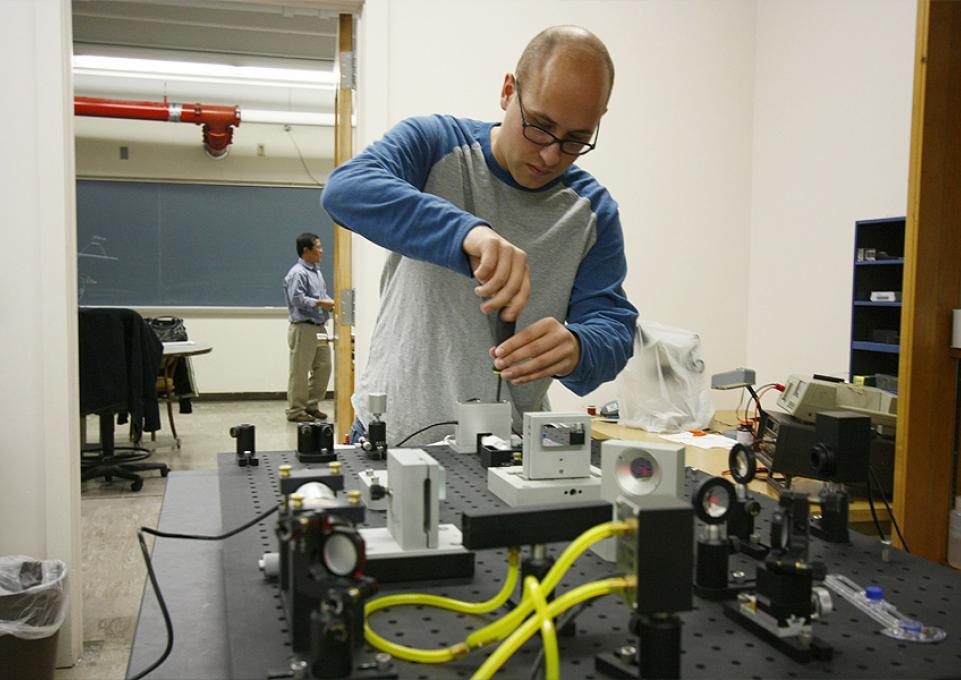
Even physicists have to keep learning to stay on top of the technology. And SUNY Buffalo State’s Physics Department is helping them do just that by hosting its third laboratory immersion from July 22 to July 24.
The Laboratory Immersion Program is the brainchild of the Advanced Laboratory Physics Association (ALPhA), which describes itself as “an association of college and university faculty and staff dedicated to advanced experimental physics instruction.”
Ram Rai, assistant professor of physics, is directing the program and serving as a mentor. Other mentors are Jonathan Reichert, George Herold, and David Van Baak. Reichert, who will be mentoring the pulsed NMR immersion, is emeritus professor of physics at the University at Buffalo and president and founder of Teachspin, Inc. Herold, a research scientist at Teachspin, was instrumental in designing the apparatus used for the noise fundamentals lab—a lab designed to demonstrate how to sort out “noise” caused by electronic interference from data collected in the course of an experiment.
Van Baak, professor of physics at Calvin College, is demonstrating Fourier methods. Rai, whose own research involves using light as a tool to investigate materials, will present the lab that focuses on using the earth’s magnetic field to explore nuclear magnetic resonance, or NMR. “That’s the fundamental science that MRIs are based on,” said Rai.
Rai, who joined Buffalo State in 2007, said that he wished he had had an opportunity to attend a program like the lab immersion program when he began teaching upper-level advanced lab courses. “On my own, I spent two to three weeks figuring out how to present a particular lab,” said Rai.
Buffalo State was among the first colleges to present the physics laboratory immersions in 2010. “Many institutions have just a few physics faculty members,” said Rai, “and some of them are theorists, not experimentalists.” Theoretical physicists (think Einstein) explore physics using math and theoretical models; experimental physicists do hands-on laboratory work to explore physics. But even experimentalists benefit from the program, because upper-level advanced laboratory classes present experiments drawn from many different areas of physics.
“The faculty members who are coming know the physics behind the phenomenon that the lab is about,” said Rai. “But to present the labs to students effectively, you have to be fluent in the technology and in new experimental techniques.”
The lab immersion program has grown rapidly since its start in 2010, demonstrating both a need and an interest from physics faculty members across the country. “We have faculty members coming from UB and SUNY Oneonta,” said Rai. “The person who is coming the furthest is from Caltech.” Faculty are also coming from Wells College, the University of Pittsburgh, the Polytechnic Institute of New York University, and the University of Wisconsin-La Crosse.
Rai said, “By attending the lab immersion program, faculty members learn to teach a new lab with confidence and skill. And that’s what successful teaching takes.”
